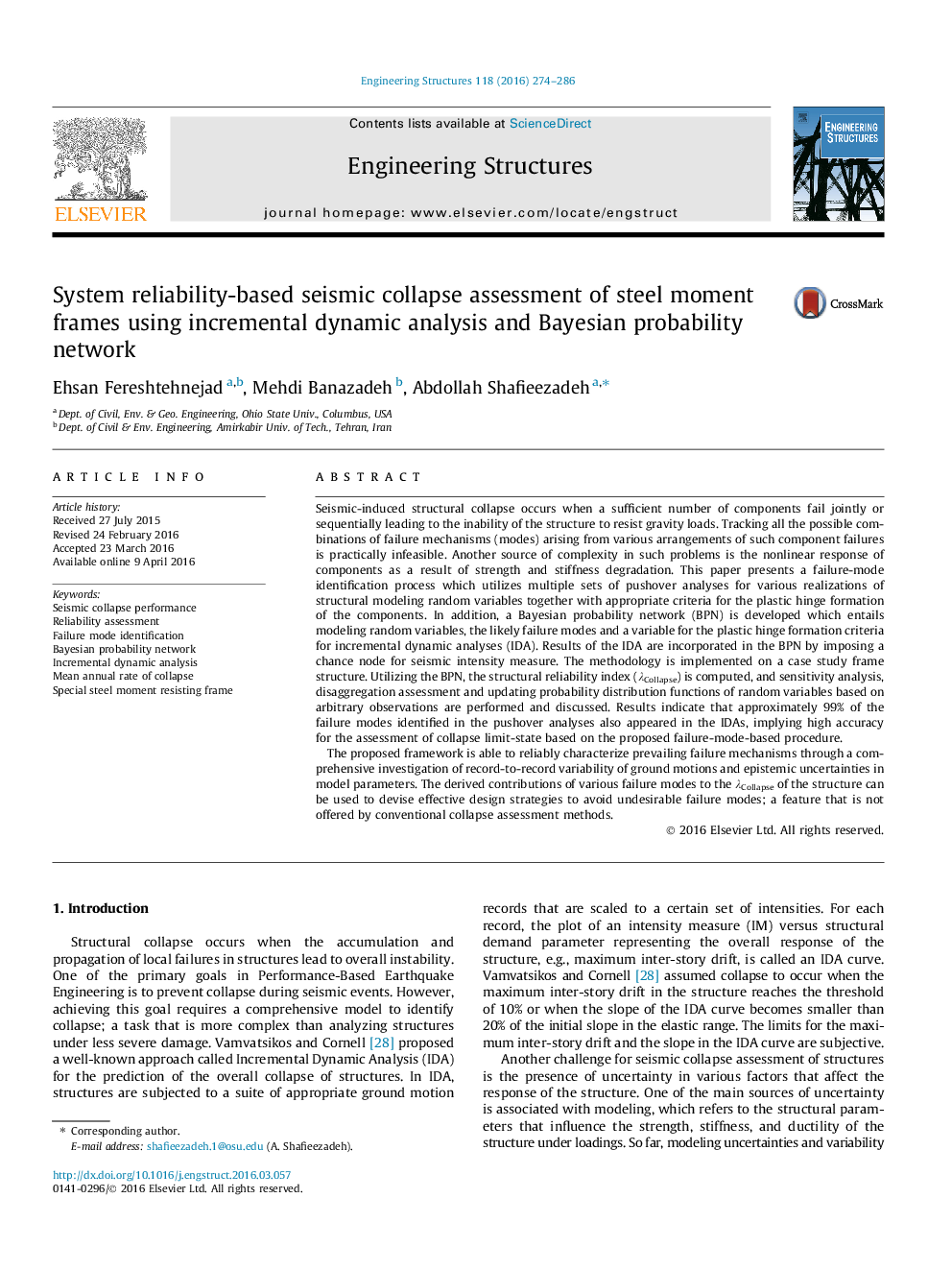| Article ID | Journal | Published Year | Pages | File Type |
|---|---|---|---|---|
| 265738 | Engineering Structures | 2016 | 13 Pages |
•A new systematic methodology for seismic collapse risk assessment is proposed.•Failure modes are identified via pushover analyses considering random variables.•A Bayesian network is created to integrate failure modes and uncertainties via IDA.•Sensitivity analysis and estimation of failure modes contributions are presented.•This method enables updating PDFs of random variables based on arriving information.
Seismic-induced structural collapse occurs when a sufficient number of components fail jointly or sequentially leading to the inability of the structure to resist gravity loads. Tracking all the possible combinations of failure mechanisms (modes) arising from various arrangements of such component failures is practically infeasible. Another source of complexity in such problems is the nonlinear response of components as a result of strength and stiffness degradation. This paper presents a failure-mode identification process which utilizes multiple sets of pushover analyses for various realizations of structural modeling random variables together with appropriate criteria for the plastic hinge formation of the components. In addition, a Bayesian probability network (BPN) is developed which entails modeling random variables, the likely failure modes and a variable for the plastic hinge formation criteria for incremental dynamic analyses (IDA). Results of the IDA are incorporated in the BPN by imposing a chance node for seismic intensity measure. The methodology is implemented on a case study frame structure. Utilizing the BPN, the structural reliability index (λCollapse) is computed, and sensitivity analysis, disaggregation assessment and updating probability distribution functions of random variables based on arbitrary observations are performed and discussed. Results indicate that approximately 99% of the failure modes identified in the pushover analyses also appeared in the IDAs, implying high accuracy for the assessment of collapse limit-state based on the proposed failure-mode-based procedure.The proposed framework is able to reliably characterize prevailing failure mechanisms through a comprehensive investigation of record-to-record variability of ground motions and epistemic uncertainties in model parameters. The derived contributions of various failure modes to the λCollapse of the structure can be used to devise effective design strategies to avoid undesirable failure modes; a feature that is not offered by conventional collapse assessment methods.
